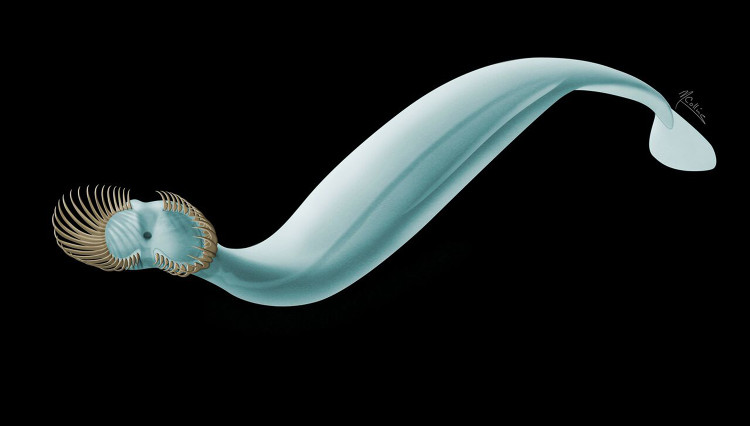The prehistoric, headless prehistoric predator
Scientists discovered a species with no sharp spines on the head living under the prehistoric ocean.
Scientist Derek Briggs of Yale University, USA in a study published in the journal Current Biology on August 3, announced that the faceless creature Capinatator praetermissus used to live in the prehistoric ocean, according to ABC News.

Capinatator praetermissus, the hunter of the ocean in the Cambrian period.(Photo: Royal Ontario Museum).
Long before the dinosaurs dominated the Earth, the sea worm Capinatator praetermissus appeared in the oceans of the Cambrian period about 541 million years ago. The fossil obtained from this species in two national parks in British Columbiua, Canada is in a well-preserved condition, storing soft tissue.
The capinatator is about 10cm long, has no face, the head like a tree catches flies with 50 sharp spines. Each sharp spine less than a centimeter long helps the Capinatator catch floating creatures and small animals when the prey comes close.
"Hard spikes are like miniature hooks. Although it is hard to know why their fossils are so thorny, it is possible that this weapon helps the Capinatator become a successful hunter , " Briggs said.
The capinatator is the ancestor of the chaetognatha arrowhead group that is common in the oceans of the world today. Although larger and more pronounced, the Capinatator has no specialized teeth like descendants.
The capinatator lived at a time when organisms on Earth began to increase in size and become more diverse in species. This animal discovery helps scientists have an additional perspective on the proliferation of life during this period on Earth.
- Strange story: Thai chickens who lost their heads still live 10 days
- Headless goldfish swim around the water tank for three days
- The mystery of the headless tribe is real on Earth
- Detecting Ladybirds 'Headless'
- Mysterious headless crocodile in 3,400 year old burial area
- Headless crocodiles in ancient Egyptian tombs
- The most frightening prehistoric monster mystery
- The identity mystery of 54 headless skeletons
- Discovered the headless sphinx
- The largest carnivorous mammal on land, dubbed the 'mobile meat grinder'
- 10 most horrifying prehistoric predator monsters
- For the first time, a complete reconstruction of the prehistoric lion lion skeleton was completed
 Discovered an ancient centipede fossil 99 million years old
Discovered an ancient centipede fossil 99 million years old Discovered bat-like dinosaurs in China
Discovered bat-like dinosaurs in China Discovered a 200-year-old bronze cannon of the coast
Discovered a 200-year-old bronze cannon of the coast Discover 305 million-year-old spider fossils
Discover 305 million-year-old spider fossils